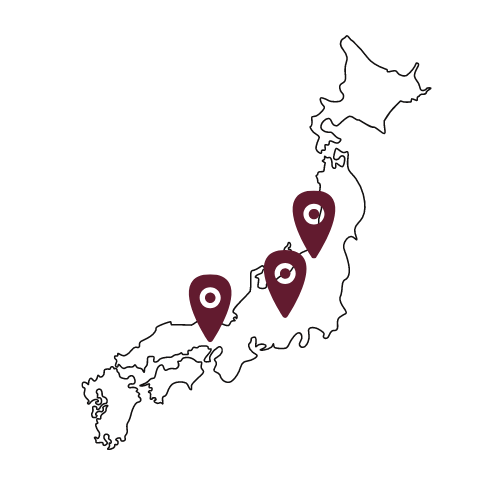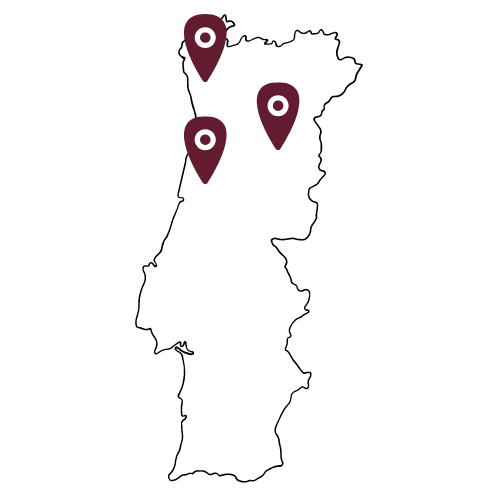Nekonshu
WELCOME TO THE LAND OF SAKE Like wine, sake is a fermented beverage elaborated from polished rice and with a similar alcoholic content. However, while wine takes its aromas and flavours from the grapes, as well as its colour in the case of red wine, rice grains have little acidity and flavour and lack any colour. Another main difference is that, by using polished rice, it cannot start germinating and transform its starch into fermentable sugar, as it happens with beer. This means that, for sake production, two processes need to concur at the same time: the transformation of starch into sugar, thanks to a mould called Koji mould, and the fermentation of that sugar into alcohol using yeasts. Unlike grapes, rice do not have a supply of water and sake brewers need to add it to allow fermentation. Around 80% of a bottle of Sake is added water and its quality and characteristics will heavily influence the style of sake produced. This characteristics mean that, for sake production, the degree of polishing, the style of koji, the yeast and water used and the elaboration methods followed have the same influence as the type of rice used. There is not a concept of terroir and, although some regions may have a more widespread style of sake, any brewery in Japan can elaborate sake in any style and using any type of rice. /*! elementor - v3.13.2 - 11-05-2023 */ .elementor-column .elementor-spacer-inner{height:var(--spacer-size)}.e-con{--container-widget-width:100%}.e-con-inner>.elementor-widget-spacer,.e-con>.elementor-widget-spacer{width:var(--container-widget-width,var(--spacer-size));--align-self:var(--container-widget-align-self,initial);--flex-shrink:0}.e-con-inner>.elementor-widget-spacer>.elementor-widget-container,.e-con-inner>.elementor-widget-spacer>.elementor-widget-container>.elementor-spacer,.e-con>.elementor-widget-spacer>.elementor-widget-container,.e-con>.elementor-widget-spacer>.elementor-widget-container>.elementor-spacer{height:100%}.e-con-inner>.elementor-widget-spacer>.elementor-widget-container>.elementor-spacer>.elementor-spacer-inner,.e-con>.elementor-widget-spacer>.elementor-widget-container>.elementor-spacer>.elementor-spacer-inner{height:var(--container-widget-height,var(--spacer-size))} All rice used for Sake production belongs to the Japonica (short-grained) type of rice. The main varieties are: ✤ Yamada-Nishiki ✤ Gohyakuman-Goku ✤ Miyama-Nishiki ✤ Dewa-Sansan ✤ Omachi And the main sake styles are: ✤ JUN-MAI ✤ Non-Junmai Yamada-Nishiki: Considered the emperor of Sake rice varieties, it accounts for 30% of the sake rice production of Japan. Around 80% of it is planted in the prefecture of Hyogo, west of Kyoto. Its grains are exceptionally large

Touriga Cational
Where can we find Touriga Cational? Touriga National is the signature grape of northern Portugal. The best wines of Douro, Dao or even the fortified wines from Porto are made with this grape variety. The main wine regions of northern Portugal are: ✤ VINHO VERDE ✤ Douro ✤ Dão ✤ Bairrada ✤ Porto /*! elementor - v3.13.2 - 11-05-2023 */ .elementor-column .elementor-spacer-inner{height:var(--spacer-size)}.e-con{--container-widget-width:100%}.e-con-inner>.elementor-widget-spacer,.e-con>.elementor-widget-spacer{width:var(--container-widget-width,var(--spacer-size));--align-self:var(--container-widget-align-self,initial);--flex-shrink:0}.e-con-inner>.elementor-widget-spacer>.elementor-widget-container,.e-con-inner>.elementor-widget-spacer>.elementor-widget-container>.elementor-spacer,.e-con>.elementor-widget-spacer>.elementor-widget-container,.e-con>.elementor-widget-spacer>.elementor-widget-container>.elementor-spacer{height:100%}.e-con-inner>.elementor-widget-spacer>.elementor-widget-container>.elementor-spacer>.elementor-spacer-inner,.e-con>.elementor-widget-spacer>.elementor-widget-container>.elementor-spacer>.elementor-spacer-inner{height:var(--container-widget-height,var(--spacer-size))} THE STORY BEHIND VINHNO VERDE Located in the northernmost part of the country, the Vinho verde region is the most humid of Portugal thanks to the influence of the Atlantic ocean. Well known for its white wines, like the Rias Baixas region at the other side of the border, most of these wines have a slight sparkling sensation that enhances their freshness. DO YOU KNOW DOURO? The oldest demarcated wine region of Portugal, Douro is considered the birthplace of the modern Portuguese wine industry. Its narrow terraces or Socalcos have become an iconic image of Portuguese wine. /*! elementor - v3.13.2 - 11-05-2023 */ .elementor-widget-image{text-align:center}.elementor-widget-image a{display:inline-block}.elementor-widget-image a img[src$=".svg"]{width:48px}.elementor-widget-image img{vertical-align:middle;display:inline-block} OUR LATEST PRODUCTS Discover our personalised products: Buy for €24,00 Touriga Cational unisex organic cotton t-shirt Select options Buy for €34,00 Touriga Cational unisex organic sweatshirt Select options Buy for €44,00 Touriga Cational unisex eco raglan hoodie Select options Buy for €24,00 Touriga Cational eco Tote Bag Add to cart Go to shop Dão: the Burgundy of Portugal 80 km south of the Douro region, in the central Portuguese mountains, the Dâo region is well known for some of the Portuguese finest red wines. Bairrada: The sparkling wine capital This region, with a stronger Atlantic influence than Dão, is home of the Baga red grape variety, one of the most important of Portugal. The vast majority of sparkling wine produced in Portugal comes from this region. Porto: History in a bottle Porto wine and Portugal have become synonym in the minds of most consumers around the world. Traditionally produced with grapes from the Douro region and transported to Porto city in barcos rabelos, a traditional boat, this fortified wine has conquered the


